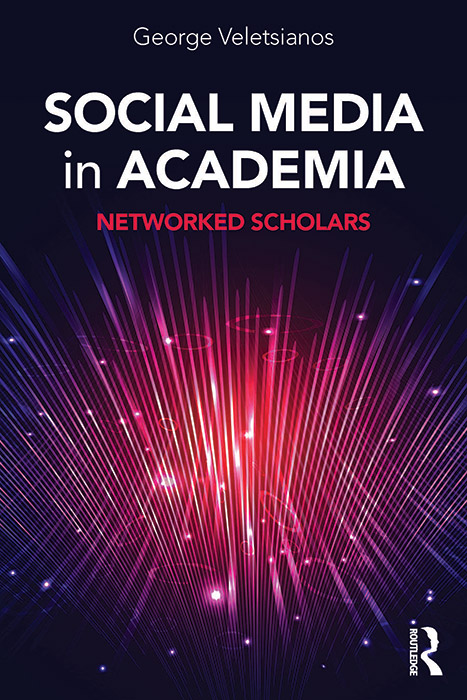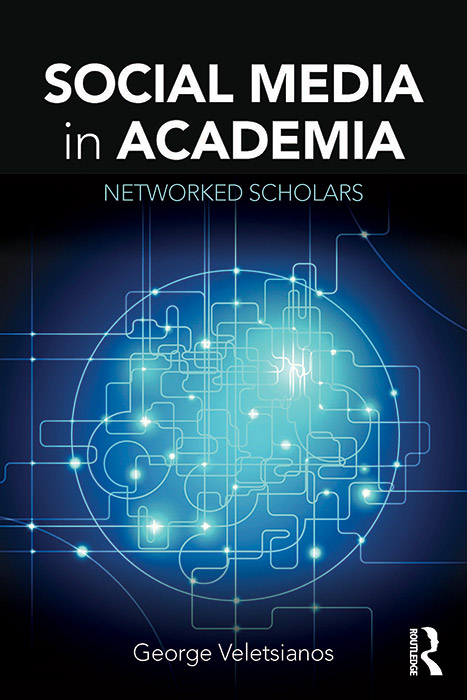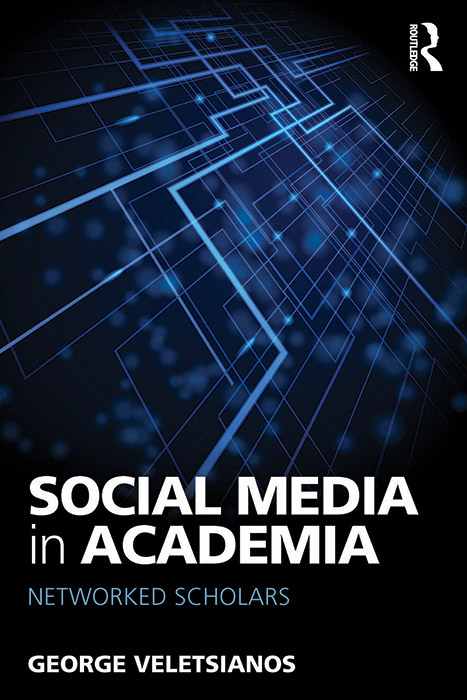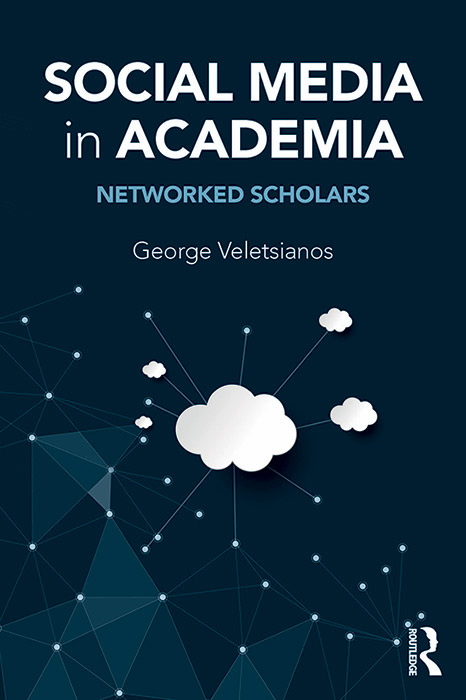1. Congratulations to the following seven individuals who completed a doctoral degree in 2014.
2. It’s always interesting to explore literature outside of peer-reviewed journals to explore how early career colleagues are thinking about a topic.
3. The doctoral dissertations that follow were all published in 2014 and they focus on various aspects of MOOCs. Undoubtedly, some of the findings reported below will make it into the peer-reviewed literature. As far as I can tell, findings from Kassabian, Kellogg, and Moe have already been published.
3. I believe that it would have been more valuable if these were already published as a series of shorter articles instead of being published as volumes that then need additional effort to be revised/refined for submission to professional journals, a practice that is both frequent and encouraged. My dissertation in 2008 was a 3-paper series. There’s ways to do this, and really good reasons to do so. I’ve discussed this option with 3-4 doctoral students recently that are exploring the option, but institutions need policies and frameworks in place to support such efforts.
4. I digress. Below you can find the citation and abstracts for these seven dissertations. Enjoy!
Gerber, J. (2014). MOOCs: Innovation, Disruption and Instructional Leadership in Higher Education. ProQuest, UMI Dissertations Publishing.
In the beginning rush of attention surrounding MOOCs (Massive Open Online Courses), there was considerable speculation regarding the ideal use and potential impact of this new innovation on teaching, learning, and traditional higher educational structures. Yet universities and colleges were rushing to implement MOOCs despite neither data nor clear understanding regarding their potential disruptive force on the educational landscape. To examine the MOOC phenomenon more closely, I conducted qualitative research that examined MOOCs integration at higher education institutions identified to be at the forefront of the MOOC movement. Framed using Everett Rogers’ model of innovation diffusion (Rogers, 1962), MOOC early adopters were defined as faculty members from US institutions who offered MOOCs between April 2012 and December 2013. This study researched initial MOOC implementation efforts in order to better determine motivations, implications and future impact on higher education, which will provide greater context to this rapidly shifting innovation. My findings indicate that the primary institutional motivation to sponsor MOOCs was to raise and/or enhance their institutional brand. The findings also indicated that faculty that self-selected to participate in MOOCs at the early stage was open to experimentation as well as to the inherent risks associated with the trial of a new educational innovation. This study uncovered important implications on the main pedagogical mission of the university and its professors as a result of instructor and institutional involvement with MOOCs. More specifically, this study revealed that MOOCs have pushed pedagogical issues to the forefront, and faculty early adopters have shifted their classroom teaching in ways believed to improve the classroom experience and create more interactive learning opportunities for students as a result of MOOCs.
Kassabian, D. (2014). Massive Open Online Courses (MOOCs) at elite, early-adopter universities: Goals, progress, and value proposition. ProQuest, UMI Dissertations Publishing.
Massive Open Online Courses (MOOCs) have become a hot topic in higher education and have undergone rapid growth. More than 800 MOOCs have been offered to the public from more than 200 of the most well known universities in the world, with millions of learners taking them. While many elite universities have developed MOOCs, their motivations have not been entirely clear. This qualitative case study research explores what three early adopter universities, Columbia University, Duke University, and Harvard University, hope to achieve by becoming involved and investing in MOOCs, how they are assessing progress toward goals, and what value proposition they seek as a return on their investment. The findings of this research suggest that the studied universities have several goals in common and a few that differ, and importantly, that several of their goals do not directly align with the public narrative around MOOCs in the press. In particular, while the goals of the studied universities do include expanded access to education, their goals may have even more to do with promoting teaching innovation and providing benefits for their residential education. None of the studied universities were focused on improvements to higher education completion challenges through pursuit of MOOC credit, or the use of MOOCs as a way to control higher education costs–both of which are major elements of the public dialogue on MOOCs. Other goals of the early adopters studied included providing more visibility for some of their educational programs and their faculty, and enabling more evidence-based education research. This study concludes that the value proposition for early adopter universities is the ability to simultaneously pursue the goal of improving on-campus teaching and learning while also promoting the university and its faculty and connecting through educational outreach with the public–all while showing leadership in an emerging higher education learning technology.
Kellogg, S. (2014). Patterns of Peer Interaction and Mechanisms Governing Social Network Structure in Three Massively Open Online Courses for Educators. North Carolina State University.
MOOCs, or Massively Open Online Courses, have gained extensive media attention for their vast enrollment numbers and the alliance of prestigious universities collectively offering free courses to learners worldwide. For many, MOOCs are filling the role of continuous education and ongoing professional development, serving to satisfy personal intellectual curiosity or enhance the workplace skills of post-graduates. A recent development in the MOOC space has been courses tailored to educators serving in K-12 settings. MOOCs, particularly as a form of educator professional development, face a number of challenges. Academics as well as pundits from traditional and new media have raised a number of concerns about MOOCs, including the lack of instructional and social supports. It is an assumption of this study that many of the challenges facing MOOCs can be addressed by leveraging the massive number of learners to develop robust online learning communities. Despite the potential benefits for educators, however, building and sustaining online learning communities has generally proved problematic. This study attempts address critical gaps in the literature and address issues of community engagement in MOOCs by examining factors that influence peer interaction among educators. Specifically, this quantitative case study is framed by the social network perspective and utilizes recent advancements in Social Network Analysis to describe the peer discussion networks that develop and model the mechanisms that govern their structure.
Moe, R. (2014). The evolution and impact of the massive open online course. ProQuest, UMI Dissertations Publishing.
An online learning phenomenon emanated 2½ years ago from three courses taught at Stanford University, promising an opportunity for high-quality instruction from elite institutions and professors for no cost to the student. This phenomenon, which came to be known as the MOOC, catalyzed sweeping changes in both higher education’s relationship with distance education, as well as the discussion of higher education in society, in a remarkably short period of time. While people have questioned the effectiveness of MOOC learning and the potential negative consequences of adopting MOOC systems either in support of or to replace existing educational infrastructure, the MOOC movement has continued to grow at a rapid pace. This research study sought to define the characteristics of the MOOC on the terms of learning theory, pedagogy, history, society and policy through the use of an expert-based Delphi study, where participants engaged in a phenomenological dialogue about what constitutes a MOOC in practice, the present state of higher education in the wake of the MOOC movement, the effect the phenomenon has had on education both structurally as well as socially, and visions of the future of the institution of higher education as affected by the MOOC. In summary, panelists focused their agreement on cognitive and pragmatic aspects of the MOOC debate, such as a hope for learning analytics to offer solutions to educational problems as well as the opportunity for the MOOC system to offer tier-based education services to consumers. The Delphi discussion showcased the importance of cognitive theory in MOOC design as well as the relationship between MOOCs and economics, and highlighted the difficulty education experts have in agreeing on how to define educational terminology.
Outland, J. C. (2014). Examining the Market Positioning of Massive Open Online Courses to Maximize Employer Acceptance. ProQuest, UMI Dissertations Publishing.
Massive Open Online Courses (MOOCs) are a new instructional method utilizing many delivery methods common to online academic courses that are being offered in greater frequency as learner interest has increased. Learners may be attending these courses due to a lack of cost and perception that completion of this training may offer some benefit to them as they seek employment. Unfortunately, due to both the relatively recent development of MOOCs and the corresponding variety in delivery and documentation methods, little research had been completed on the acceptability of this instructional method by potential employers. Without this information, learners would be completing training that has little applicable benefit to them as they seek positions or advancement. Additionally, institutions would be offering courses in formats that do not fully benefit students, resulting in a sub-optimal use of institutional resources. The purpose of this qualitative study was to examine the perceptions of U.S.-based employers on instruction using variations of the MOOC model, and to identify traits in this delivery method that make completion of this training advantageous to potential applicants. Human resources and hiring managers were interviewed to determine their preferences using a focus group model. The data collected indicates MOOCS are positively perceived by employers, but not optimally positioned due to a lack of understanding and documentation. Employer perceptions of MOOCs can be enhanced by the consideration and inclusion of industry required skillsets to ensure that learners are focused on employer desired abilities that allow them to meet minimum and preferred job requirements. Additionally, by providing accurate and detailed documentation of the contents of a MOOC, institutions can ensure that a course is readily measurable by employers. This documentation can take many forms, but credentials that detail the topics covered, time spent, and completion evaluation method are preferred. By adopting these identified key requirements of employers, institutions may be able to better position their MOOC offerings into categories that are more easily understood and evaluated during the hiring process. These changes would then enhance the perceived benefits of these classes, and generate additional advantages for job seekers who have completed these courses.
Schulze, A. S. (2014). Massive open online courses (MOOCs) and completion rates: are self-directed adult learners the most successful at MOOCs?. ProQuest, UMI Dissertations Publishing.
Millions of adults have registered for massive open online courses, known as MOOCs, yet little research exists on how effective MOOCs are at meeting the needs of these learners. Critics of MOOCs highlight that their completion rates can average fewer than 5% of those registered. Such low completion rates raise questions about the effectiveness of MOOCs and whether adults enrolling in them have the skills and abilities needed for success. MOOCs have the potential to be powerful change agents for universities and students, but it has previously been unknown whether these online courses serve more than just the most persistent, self-directed learners. This study explored the relationship between self-directed learning readiness and MOOC completion percents among adults taking a single Coursera MOOC. By examining self-directed learning – the ability to take responsibility for one’s own educational experiences – and MOOC completion rates, this research may assist in improving the quality of MOOCs. A statistically significant relationship was found between self-directed learning and MOOC completion percentages. Those stronger in self-directed learning tended to complete a greater percent of the MOOC examined. In addition, English speaking ability demonstrated a mediating effect between self-directed learning and MOOC completion. Learners indicating a strong ability in speaking English were more likely to be ready for self-directed learning and completed a higher percentage of the MOOC. Compared with those that did not complete MOOCs, however, few additional differences in demographics of adult learners that completed MOOCs were found. To better understand the skills and experiences needed to be successful in a MOOC, additional research on factors that influence MOOC completion is warranted. If only a minority of strongly self-directed learners can successfully complete MOOCs, then more resources should be invested into the design and development of MOOCs to meet the needs of many learners. If this does not occur, then MOOC completion rates could continue to suffer and new open education solutions of higher quality may appear, making MOOCs a short-lived phenomenon.
Stefanic, N. M. (2014). Creativity-Based Music Learning: Modeling the Process and Learning Outcomes in a Massive Open Online Course. ProQuest, UMI Dissertations Publishing.
While developing creativity is an important goal of many educational endeavors, creating music, from a music education perspective, is a powerful pedagogical tool. Beyond comparing the relative creativity of individuals’ musical creative products (e.g., melodies, songs, lyrics, beats, etc.), research in musical creativity must consider how engaging in the creative process can be an effective teaching tool, what I have termed creativity-based music learning. If music teachers are to develop students’ abilities “to experience music as meaningful, informed by sensitive discernments and broad understandings, in each particular musical role engagement in which one becomes involved” (Reimer, 2003, p.214), then we must gain a better understanding of how different aspects of the person and context interact during the creative process. Based on the available literature, Webster (1987a, 2002) conceived the Model of Creative Thinking in Music as a conceptual model for understanding the importance of various components that are at work in the musical creative process. Since, generally speaking, learning results from thinking of some sort, Webster’s model represents a reasonable starting point from which to examine how musical creative thinking leads to musical learning. There is much research in music education and the general creativity literature that has investigated how these various component parts (e.g., music aptitude, personality, motivation, previous experience, context) relate to creativity, but there has yet to be any substantive attempt to understand how all of these various elements simultaneously interrelate during a given musical creative process. More importantly, there is limited research on how creativity-based music learning contributes to important learning outcomes such as students’ perceptions of learning from the process, students’ self-evaluations of creative products (e.g., songs they have written), the development of conceptual understandings, and the development of musical creative self-efficacy. The initial primary purpose of this study was to develop and identify a statistical model that best represents the nature of the various interrelationships of components of the musical creative process, as identified in Webster’s (2002) model, and as they relate to learning outcomes. Understanding how all of these components relate and ultimately impact various learning outcomes has important implications for how we educate our music students. Data were collected from students taking a Massive Open Online Course entitled “What is Music?: Finding Your Song,” which was designed, developed, and taught by the researcher, and offered in January 2014 through the Canvas Network. In the course, the question “what is music?” was approached from several perspectives, including Music as Human Activity, Music as Emotion, Music as Physics, and Music as Form. While learning about each perspective, students were encouraged to engage with and complete various musical creative projects (e.g., creating a representative playlist, writing lyrics, writing a melody, writing a song). Such an educational context in which creativity is used as a pedagogical tool provided an opportunity for studying the educational outcomes of such an approach. Embedded within the course were measures of several predictors of learning (based on Webster’s model), including past experience in music, personality, music aptitude, contextual support, musical creative self-efficacy, motivation, and situational engagement. Initial analysis plans included the use of structural equation modeling to (1) compare and contrast the statistical fit of competing models; and (2) examine how each of these constructs not only relate to each other, but also how they each contribute (uniquely and in combination) to various learning outcomes, including perceptions of learning, self-evaluations of creative products, and musical creative self-efficacy. However, a sufficient number of students did not engage in and complete the creative projects, nor did a sufficient number of students complete all of the research items, in order to examine the full structural model. When it became apparent that sufficient data would not be available, the study was re-envisioned to examine questions about why students chose to participate or not participate in the creative music-making projects. Data were collected from 281 students, and although missing data was quite extreme for variables measured late in the course (e.g., motivation), large amounts of data were available regarding students’ past experience in music, their expectations regarding participation as MOOC learners, and demographic information (e.g., age, gender, education, language, geographic region). The available data were used in an exploratory manner to derive a model for predicting creative project participation in the course. The sole important predictor of project participation was whether students identified themselves as an “active participant” at the beginning of the course, although this variable explained only a small amount of variability in project participation. Follow-up analyses for group differences in Active Participant (individuals who identified themselves as “active participants” versus all other Types of Learners) found that “active participants” had significantly higher levels of Musical Creative Self-Efficacy, greater perceptions of the learning context as challenge-supportive, and higher scores on the Openness personality factor. Notably, students’ Past Experience in Music appeared to be unrelated to both whether they intended to participate in the creative music-making projects and whether they actually participated in the projects. In addition to the primary MOOC study, the development and initial validation procedures and results for two new research instruments utilized in the MOOC study, the Past Experience in Music Inventory (PEMI) and the Musical Creative Self-Efficacy Scale (MCSES), are described in detail. The latent class measurement model utilized for measuring Past Experience in Music is a unique and potentially valuable approach for measuring this important variable in music research of all kinds. Finally, an exploratory analysis of all zero-order rank-order intercorrelations of all non-nominal variables indicated some initial support for the General Specified Model of Creativity-Based Learning. It was not possible to take the next step with the model: to prune it, alter it, or reject it altogether, but when viewed as a very large-scale pilot study, this study did provide enough evidence to warrant investing the considerable amount of resources necessary to take that next step. Implications for creativity-based music learning and the significance of MOOCs and MOOC research are discussed. In particular, music MOOCs represent an opportunity to fill in some much needed space for lifelong learning. However, if we are to promote lifelong musical engagement, then the pedagogy within a MOOC should also promote engagement. As such, questions and further research regarding such engagement, especially within a creativity-based learning framework, are central to better understanding how to promote and facilitate lifelong musical engagement and musical learning.





